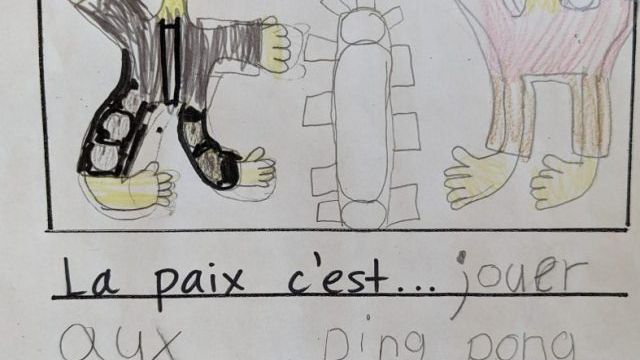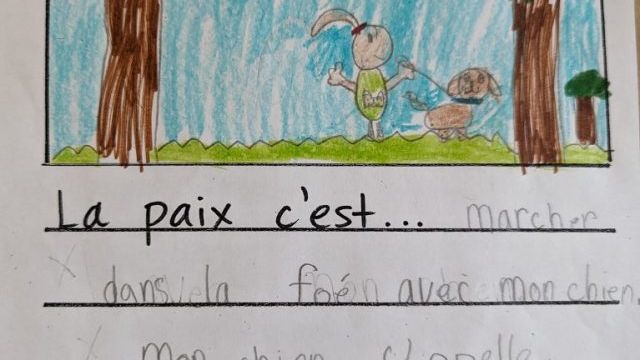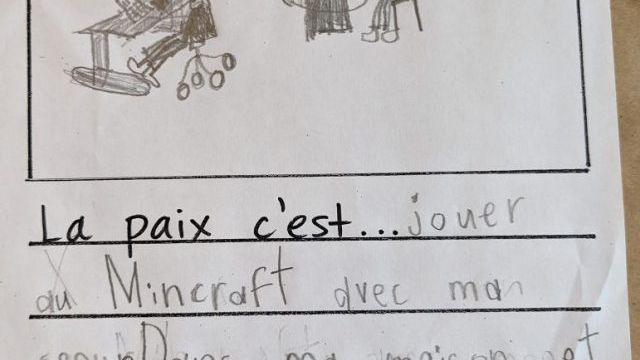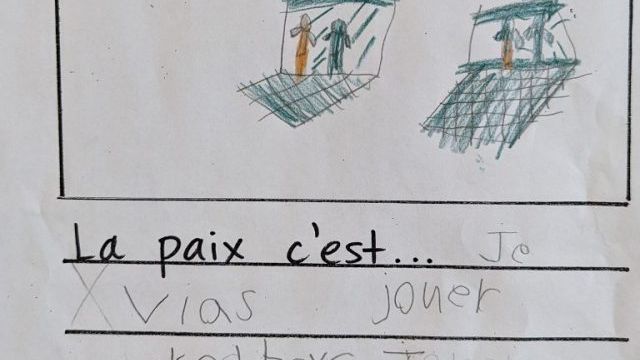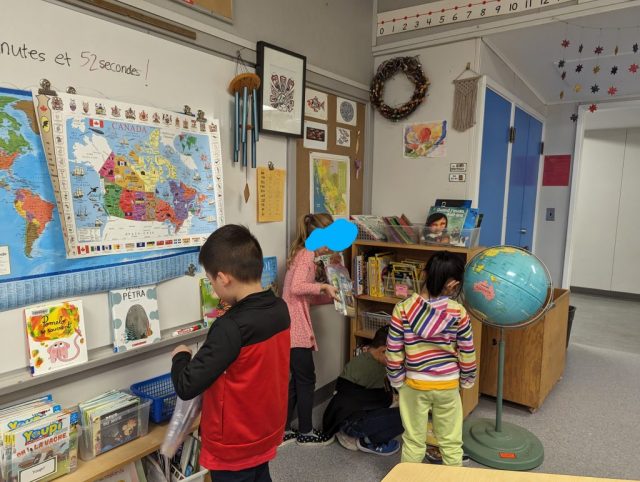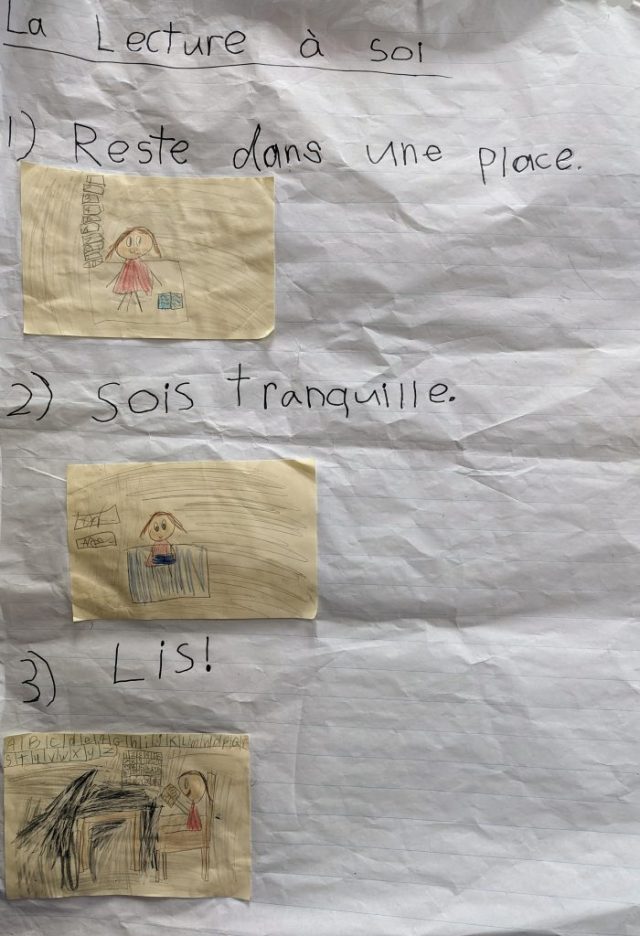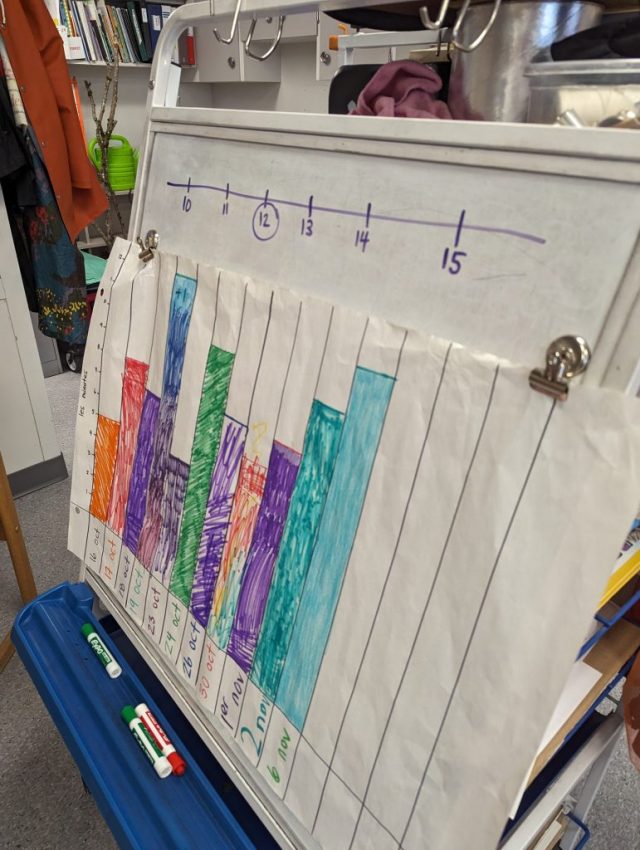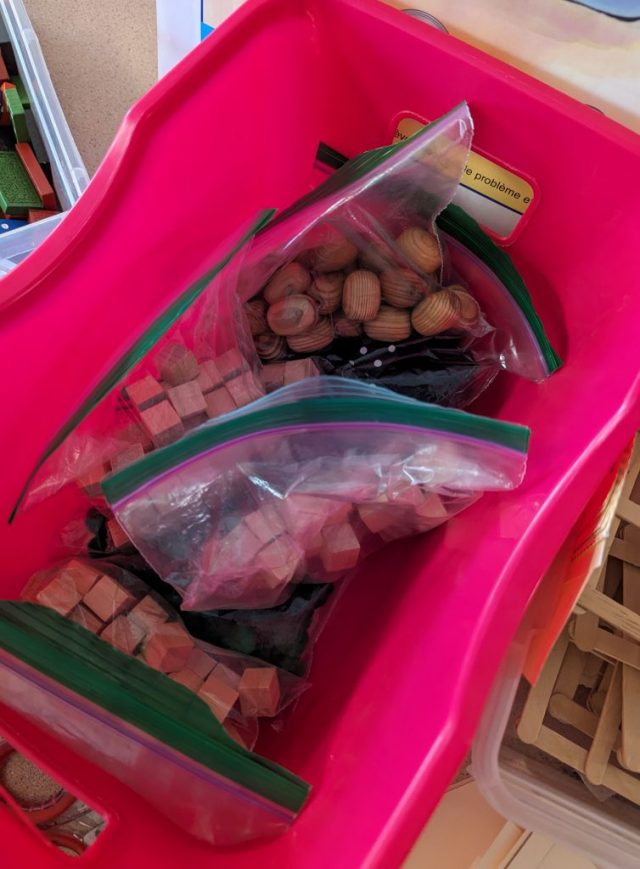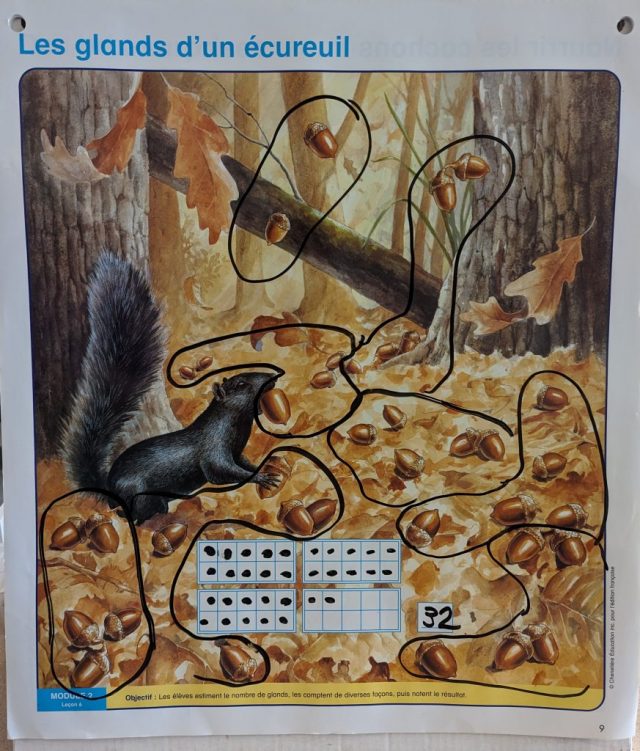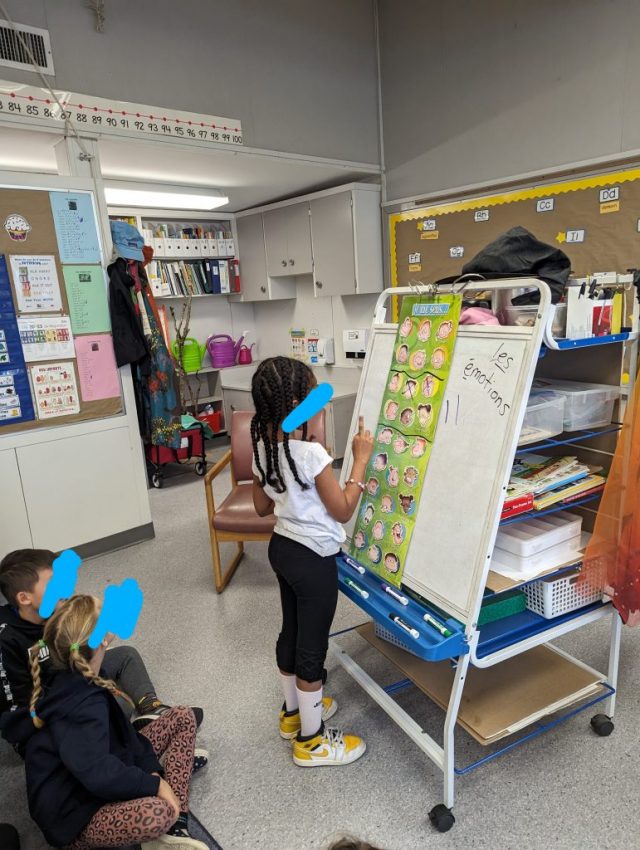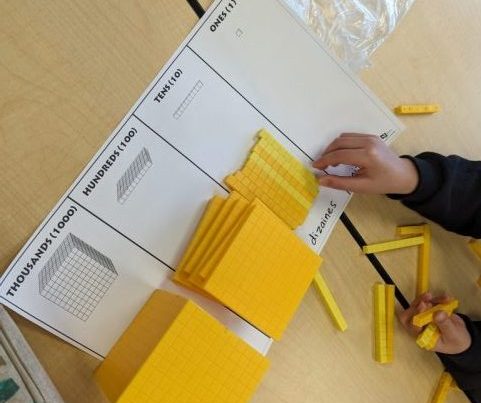 We’ve started exploring base 10 materials this week. We’re exploring this Big Idea from the Grade 2 curriculum: “Numbers to 100 represent quantities that can be decomposed into 10s and 1s.”
We’ve started exploring base 10 materials this week. We’re exploring this Big Idea from the Grade 2 curriculum: “Numbers to 100 represent quantities that can be decomposed into 10s and 1s.”
We’re learning this content regarding place value:
understanding of 10s and 1s
understanding the relationship between digit places and their value, to 99 (e.g., the digit 4 in 49 has the value of 40)
decomposing two-digit numbers into 10s and 1s
As seen in the photo above, students had fun exploring even bigger numbers. They noted how the number 10 is important in each unit, ex. 10 ones make one ten, 10 tens make one hundred, etc.
We’ve been learning relevant math vocabulary such as une unité (a one), une dizaine (a ten), une centaine (a hundred), or valeur de position (place value).





